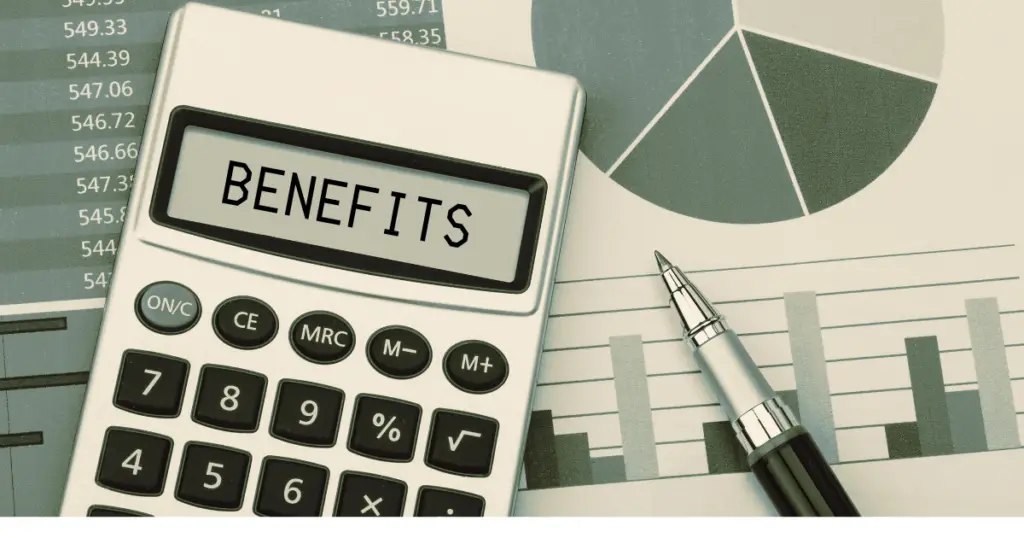
Planning for retirement doesn’t have to feel overwhelming or uncertain. A well-prepared retirement strategy can mean the difference between financial confidence and unexpected difficulties during your golden years. But how do you know if you’re saving enough or spending too much?
Enter the retirement calculator, a game-changing tool for future retirees. Whether you’re years away or nearing retirement, a retirement calculator provides valuable insight into your financial readiness. This blog will explore why every future retiree needs a retirement calculator, how it works, and tips to maximize its utility.
Table of Contents
- What Is a Retirement Calculator?
- How a Retirement Calculator Works
- Benefits of Using a Retirement Calculator
- Tips to Maximize Using a Retirement Calculator
- Final Thought: Take Charge of Your Retirement Today
What Is a Retirement Calculator?
A retirement calculator is a digital tool that helps individuals estimate the savings needed to achieve their retirement goals. It is based on factors such as your current age, expected expenses, inflation rates, your estimated life expectancy, expected retirement age, and your investment returns. By inputting these details into the calculator, users receive a rough estimate of how much they need to save regularly to meet their desired retirement financial goals.
Real-World Example: How a Retirement Calculator Can Help
Let’s look at an example of how a retirement calculator can help. In this hypothetical, we have a 45-year-old professional named Bill earning $80,000 per year. Bill has $150,000 in retirement savings and contributes 10% of his salary annually. However, he plans to retire at 65 and will need $60,000 per year.
Using a retirement calculator, we can determine that Bill falls short of his retirement goal by $300,000. That means he would ultimately need to increase his contributions or delay his retirement. Fortunately, with this insight, Bill knows to adjust his savings rate to 15% per month to stay on track.
How a Retirement Calculator Works

Most retirement calculators work by analyzing your financial situation and projecting or estimating how much you need to save to retire comfortably. This is typically straightforward as you only need to input essential information such as
- Age
- Current income
- Existing savings
- Savings rate
- Expected annual expenses in retirement
- Anticipated investment returns
- Preferred retirement age
The calculator then processes these details, factoring in variables like inflation and market performance. It highlights any gaps between your estimated savings and the amount required to sustain your retirement. Based on the results, the calculator may suggest adjusting your savings rate, retirement age, or investment strategy to achieve your retirement financial goals.
Benefits of Using a Retirement Calculator

Planning for retirement is essential for financial stability, and a retirement calculator is a valuable tool to help navigate the complexities of saving for the future. Here is why every future retiree needs a retirement calculator:
Understanding Your Retirement Needs
Having a clear picture of your retirement needs allows you to make informed financial decisions. A retirement calculator analyzes your income, expenses, savings rate, and expected returns to provide a personalized retirement savings plan. This allows you to see how much you need to save to meet your retirement needs and whether you are on track for a secure future.
Retirement calculators account for inflation, ensuring that your savings accurately maintain their purchasing power over time. This helps in setting realistic and sustainable savings targets that align with future retirement needs.
Outliving your savings in retirement is another major concern. By factoring in life expectancy, a retirement calculator helps ensure that your savings last throughout your lifetime, providing long-term financial security and peace of mind.
Evaluating Savings Strategies
Different savings strategies can significantly impact your retirement outcome. A retirement calculator helps you see how different savings rates impact your retirement goals. By adjusting the amount you contribute monthly or annually, you can determine the ideal savings strategy to reach your desired retirement income.
A retirement calculator also incorporates expected rates of return, helping you visualize how different investment strategies can accelerate your savings. This will guide you in selecting the best mix of assets for your portfolio.
The calculator’s ability to experiment with different retirement ages allows you to see how retiring earlier or later affects your savings needs. This insight gives you the flexibility to adjust your retirement timeline based on your financial goals and lifestyle preferences.
Identifying Gaps and Adjusting Retirement Plans
Even the best-laid plans can have gaps. A retirement calculator helps pinpoint the difference between your current savings and your retirement goals. If there’s a shortfall, knowing about it early gives you time to course-correct, which is key to successful retirement planning.
Once you identify a gap, you can make targeted adjustments; such as increasing contributions, diversifying your investment strategy, or adjusting your retirement age; to ensure you stay on track. This proactive approach is key to preventing major financial challenges and strain in your retirement years.
Stress Testing Your Plan
Life is unpredictable, and financial plans should be flexible. By modeling various situations; such as market downturns, unexpected expenses, or medical emergencies; a retirement calculator helps you understand how external factors can impact your savings. This allows you to develop a more flexible, resilient, and adaptable retirement financial plan.
Stress testing helps you see whether you need to build a larger emergency fund, adjust your withdrawal strategy, or explore additional income sources. This prepares you for financial shocks, which is vital in reducing the risk of depleting your retirement savings.
Enhancing Financial Discipline
Sticking to a financial plan requires discipline. A retirement calculator helps you establish achievable, clear savings goals. Knowing exactly how much you need to set aside each month gives you a clear roadmap and the motivation to stay committed to your retirement financial future.
Using your retirement calculator regularly can help track your savings growth and make necessary adjustments. Whether it’s increasing contributions, adjusting investments, or fine-tuning expenses, having a measurable way to track progress keeps you focused and financially disciplined. Be sure to review these smart money tips to improve your financial discipline.
Planning for Healthcare Costs
Healthcare costs can be a major expense in retirement. Factoring them into your plan helps ensure financial security.
Many retirement calculators account for medical costs, insurance premiums, and out-of-pocket expenses. This helps you plan for the reality of rising healthcare costs. By accounting for these expenses early, you can avoid getting caught off guard and that medical bills don’t derail your retirement plans.
Some retirement calculators also include estimates for long-term care services, such as assisted living or in-home care, which can be expensive. Factoring in these potential costs helps you prepare financially and explore options like long-term care insurance to protect your retirement savings.
Tips to Maximize Using a Retirement Calculator

Using a retirement calculator is a great way to plan for your future, but to get the most accurate and useful results, it’s important to approach it strategically. Here are some key tips to maximize its effectiveness:
- Use Up-to-Date Financial Data: Regularly update your calculator inputs to reflect changes in income, expenses, and investment performance. This ensures your projections stay relevant as your financial situation evolves.
- Factor in Lifestyle Adjustments: Consider how your spending habits may change in retirement. For instance, some expenses may decrease (commuting, work-related costs), while others (travel, healthcare) may increase.
- Account for Inflation: Ensure that your projections include a reasonable inflation rate to maintain your future purchasing power. For instance, costs for essential expenses, especially healthcare and housing, can rise significantly over time.
- Prepare for Unexpected Costs: Life after retirement is unpredictable, so incorporate a financial buffer for emergencies, such as unexpected medical expenses, home repairs, or market downturns.
- Run Multiple Scenarios: Test different scenarios, such as retiring at different ages, varying market conditions, or adjusting savings contributions. This will help you understand how flexible your plan is under different circumstances.
- Review Investment Strategies: Assess how different asset allocations impact your retirement savings. Adjusting your mix of stocks, bonds, and other investments can optimize your returns while managing risk.
- Track Progress Annually: Reevaluate your retirement plan each year or after major financial changes, such as salary increases, unexpected expenses, or shifts in investment returns.
- Consult a Financial Advisor: While calculators provide useful estimates, consulting with a financial professional ensures you have a tailored strategy that accounts for your unique retirement situation and goals.
By applying these tips, you can make informed financial decisions and stay on track for a comfortable and secure retirement.
Final Thought: Take Charge of Your Retirement Today

Retirement doesn’t just happen—it’s planned. Using a retirement calculator enables you to live your post-work years with confidence, financial stability, and excitement.
If you’ve never used one, there’s no better time than now. Take control of your future with this free, highly rated Retirement Calculator Tool. Share this with friends, family, or coworkers who may also benefit—it’s never too late to plan together!


